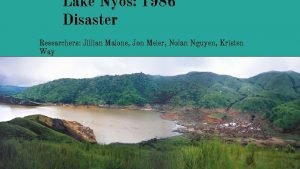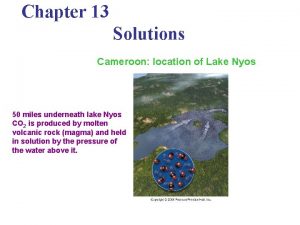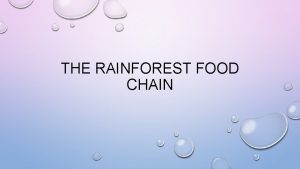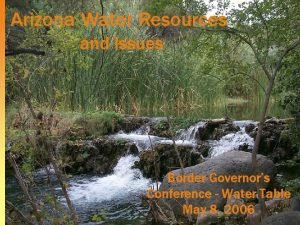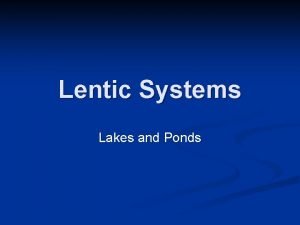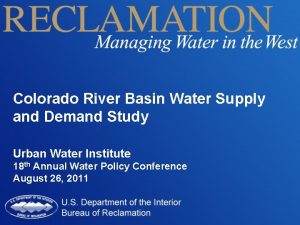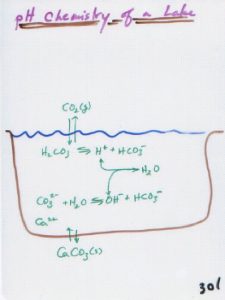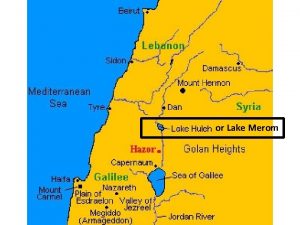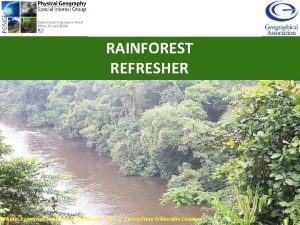Figure 13 1 Lake Nyos Cameroon Africa This










- Slides: 10

Figure 13. 1 Lake Nyos, Cameroon, Africa. This is the site of a catastrophic CO 2 release that killed 1, 700 people in 1986. Image courtesy: George Kling. Freshwater Ecology: Concepts and Environmental Applications of Limnology © 2019

Figure 13. 2 The relative concentrations of inorganic compounds involved in the bicarbonate equilibrium as a function of p. H. Freshwater Ecology: Concepts and Environmental Applications of Limnology © 2019

Figure 13. 3 Water jet in Lake Nyos upon installation of CO 2 releasing pipe into the hypolimnion. Photograph courtesy: Michel Halbwachs. Freshwater Ecology: Concepts and Environmental Applications of Limnology © 2019

Figure 13. 4 A general diagram of aerobic breakdown of organic carbon by organisms. Modified from Rheinheimer (1991). Freshwater Ecology: Concepts and Environmental Applications of Limnology © 2019

Figure 13. 5 Breakdown of leaves in streams. (A) breakdown of alder follows a typical exponential decay, (B) decomposition of beech leaves increases following a flood (at around 80 days), (C) rates of various species as a function of lignin content, and (D) rates as a function of nitrate concentration in the stream. (A, B, and D) Data from Gessner and Chauvet (1994). (C) Data from Suberkropp and Chauvet (1995). Freshwater Ecology: Concepts and Environmental Applications of Limnology © 2019

Figure 13. 6 A leaf in Valium Stream, Ihla Grande, in the Atlantic Rainforest of Brazil. Only the recalcitrant portions of the leaf that have not been degraded remain. Freshwater Ecology: Concepts and Environmental Applications of Limnology © 2019

Figure 13. 7 A general diagram of breakdown of organic material across a redox gradient. Organisms are shown in solid boxes, and chemical pools are shown in dashed boxes. Curved arrows with solid lines indicate alternative electron acceptors for oxidation of organic carbon, and the preferred redox of each of these transformations approximately corresponds with the redox curve drawn on the right. Redrawn from Westermann (1993). Freshwater Ecology: Concepts and Environmental Applications of Limnology © 2019

Figure 13. 8 Global sources (anthropogenic and natural) and sinks of methane. Estimates are from 2000 to 2009. Data from Kirschke et al. (2013). Freshwater Ecology: Concepts and Environmental Applications of Limnology © 2019

Figure 13. 9 Diagram of a hypothetical nutrient cycle. This will be the general format used to represent nutrient cycles. Oxic processes are above the center horizontal line and anoxic processes are below. Those that move on the center line are required, independent of O 2 concentration. Inorganic forms are listed from left to right, from reduced to oxidized. The redox state of the inorganic compounds varies with the elements being considered, and are arbitrarily set to 14 and 4. Hence, transformations are generally occurring with potential energy if they move from left to right in the top half of the diagram or from right to left in the bottom half of the diagram. Freshwater Ecology: Concepts and Environmental Applications of Limnology © 2019

Figure 13. 10 A diagram of the generalized carbon cycle. See Fig. 13. 9 for a general explanation of the diagram layout. Freshwater Ecology: Concepts and Environmental Applications of Limnology © 2019
